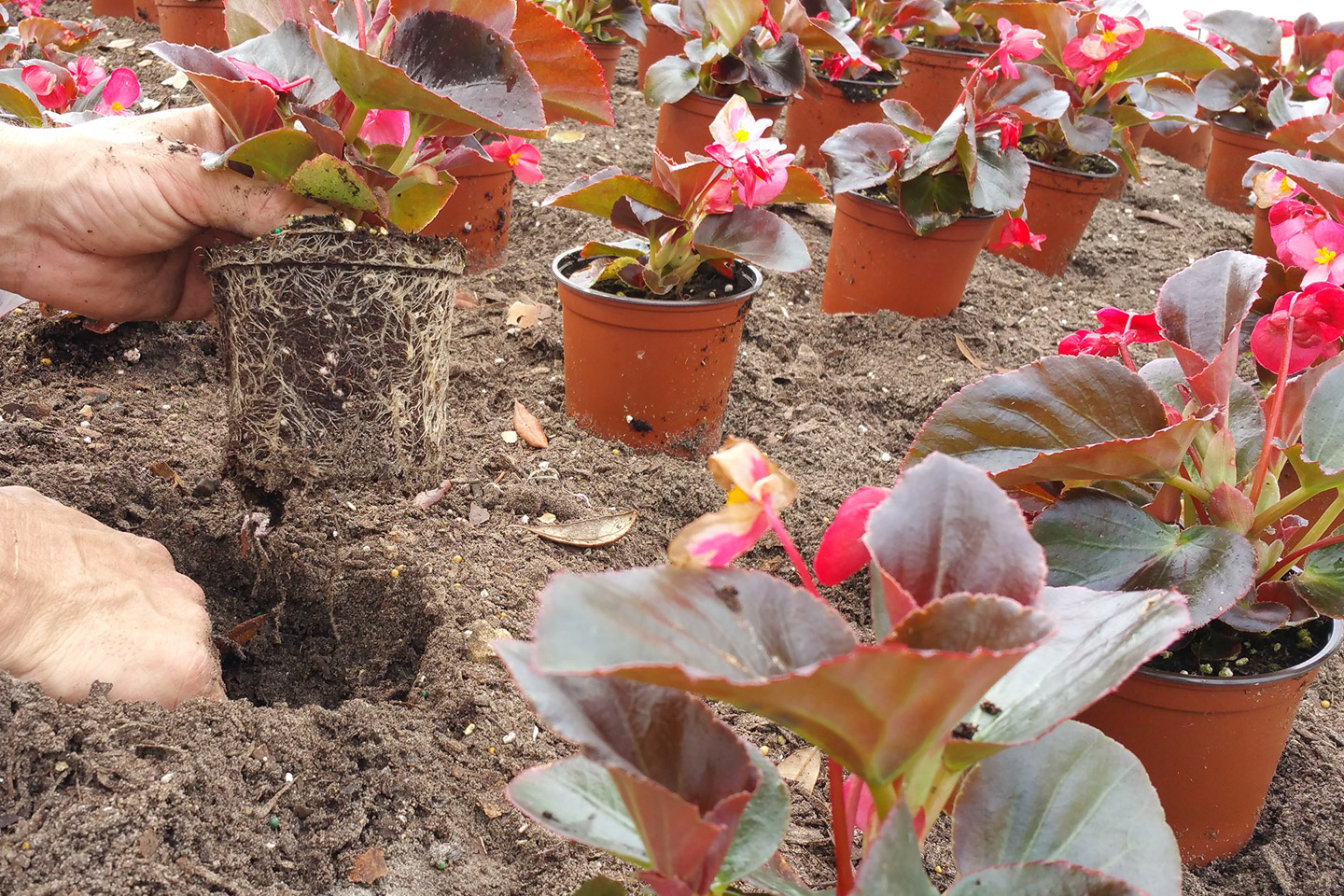Hardwood Tree Pruning - Sit Down with CEPRA
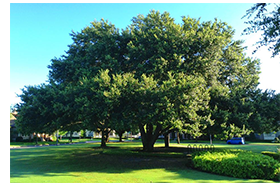 Pruning is the most common tree maintenance procedure. Unlike forest trees, landscape trees require a high level of care to maintain their structural integrity and aesthetics. The type of care depends on a tree's size, age, and condition. Typically, no more than 5% to 20% of a tree's crown should be removed at one time. In this article, we will discuss the appropriate equipment, experience, and knowledge for the pruning task that you want to accomplish.
Pruning is the most common tree maintenance procedure. Unlike forest trees, landscape trees require a high level of care to maintain their structural integrity and aesthetics. The type of care depends on a tree's size, age, and condition. Typically, no more than 5% to 20% of a tree's crown should be removed at one time. In this article, we will discuss the appropriate equipment, experience, and knowledge for the pruning task that you want to accomplish.
Reasons to Prune
Improper pruning can create lasting damage or even shorten the life of a tree. Because each cut has the potential to change the growth of a tree, no branch should be removed without a reason. These are some of the most common reasons to prune:
- Cleaning: The removal of dead, dying, weakly attached, and low-vigor branches from the crown of the tree.
- Clearance: Elevating the lower limbs on a tree provides safe clearance to pedestrians on walkways. Trees located by driveways and right of ways should also be elevated appropriately for traffic, lighting, and signage visibility.
- Health: Pruning can be used to remove or control pests and disease on parts of the tree. This increases the opportunity to avoid unnecessary use of pesticides and prevent the problem from spreading on to healthy parts of the tree. This is a good alternative when the pest/disease infestation is minor and limited to a few branches.
- Protection of Structures: Pruning branches away from buildings helps to reduce pest access, reduces moisture, and avoids friction of limbs against walls and windows.
- Storm Damage Mitigation: Pruning selected interior branches of a tree will allow better wind flow thought the canopy and produce less resistance. This will reduce the possibility of breakage in the structure of the canopy during a major storm.
- Crown Reduction: Pruning can be used to give a tree the desired size and control its growth in tight or limited spaces.
Equipment
As there are many reasons to prune a tree, there are also many ways to prune it. Nevertheless, there are some important pointers to follow.
1. Personal Protective Equipment & Safety: Safety is key. Before doing any basic work to your trees, make sure you have the appropriate personal protective equipment. This includes a good pair of leather gloves, safety glasses, a hat for sun protection, and a good pair of sturdy boots. Close fitting shirts and long pants are also advisable. Be sure to assess your work area for pedestrians, vehicles, and power lines. Always be aware of your surroundings.
2. The Right tools for the Right Job: The basic pruning tools are hand pruners, loppers, and the pruning saw. Each specializes in a size of branch. The hand pruners are ideal for branches thinner than half an inch wide, or the width of your pinkie. Loppers are ideal for branches up to 1.5 inches in diameter. This is roughly the size of a half-dollar. Pruning saws are the best tool to use for branches over 1.5 inches in diameter.
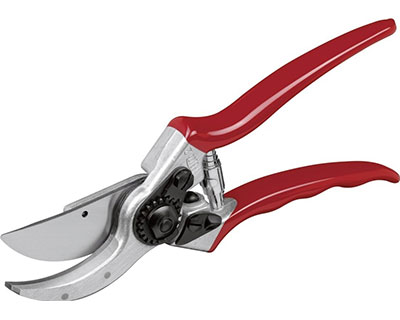
Hand Pruners:
For branches thinner than 1/2 inch.
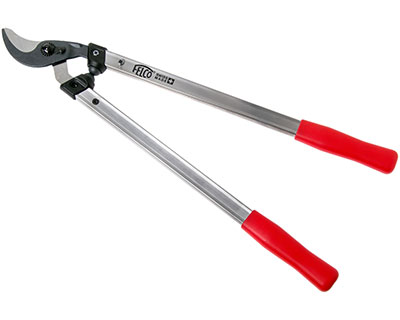
Loppers:
For branches up to 1 1/2 inch in diameter.
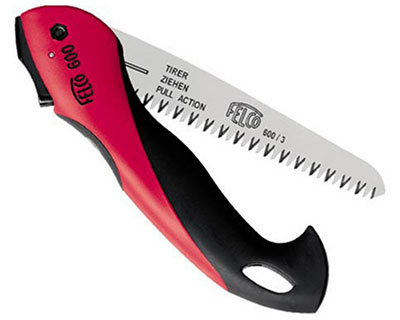
Pruning Saw:
For branches over 1 1/2 in diameter.
Where and How to Cut
There are two main types of cut: the 3-point cut, and the weight reduction cut.
3-Point Cut: The most popular method to prune a tree is the 3-point cut procedure. This is best recommended if the branch is over 1 inch. This cut prevents tears and peeling of the bark, and will make a cleaner cut that will heal faster. When pruning a branch completely off a tree, the cut should be made as close to the tree trunk as possible without removing the branch bark ridge and branch bark collar (see figure below).
- Step 1: Make a cut on the underside of the branch almost halfway through about 12 inches from the trunk.
- Step 2: Make a second cut further out on the top part of the limb that will go thought the diameter of the branch and which will remove the weight of the branch.
- Step 3: Remove the remaining stub with the final cut, being careful not to cut flush against the trunk - keeping the branch collar intact.
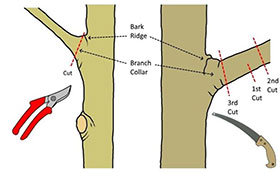 Weight Reduction: To reduce weight, you must prune back to an intersecting branch at least 1/3 its size to help reducing the weight while supporting future growth. Then, make an imaginary line about where the collar ends. That is the place where the next two cuts need to be made (see figure below.) When the pruning cuts are not done as close as previously described, you end up with "hat racks," or small stubs of the branch sticking out of the tree, that will prevent the wounds from healing correctly and fast. This will create an opening for disease and rot. On the other hand, if the cut is done too close to the trunk and the branch collar is injured, the wound is going to be too big in diameter and will improperly heal. We want to avoid injury to the branch collar - the swollen area where the limb meets the trunk - as this is the main source of the tree's ability to heal wounds, and the main defense the tree trunk has against deadly pathogens.
Weight Reduction: To reduce weight, you must prune back to an intersecting branch at least 1/3 its size to help reducing the weight while supporting future growth. Then, make an imaginary line about where the collar ends. That is the place where the next two cuts need to be made (see figure below.) When the pruning cuts are not done as close as previously described, you end up with "hat racks," or small stubs of the branch sticking out of the tree, that will prevent the wounds from healing correctly and fast. This will create an opening for disease and rot. On the other hand, if the cut is done too close to the trunk and the branch collar is injured, the wound is going to be too big in diameter and will improperly heal. We want to avoid injury to the branch collar - the swollen area where the limb meets the trunk - as this is the main source of the tree's ability to heal wounds, and the main defense the tree trunk has against deadly pathogens.
Common Pruning Mistakes
Tree pruning is both a science and an art. If you prune your trees without understanding the principles of pruning and tree growth, you risk permanently damaging your trees. Pruning also affects a tree's ability to resist pathogens and insects, in both direct and indirect ways. In direct terms, the pruning wound presents a potential site of pathogen entry into the tree, an "infection court," and allows the pathogens to bypass the tree's defense layers. Every pruning cut you make to a tree is a wound, but a correct pruning cut allows the tree to seal off the wounded area and prevent insects and disease from gaining a foothold inside the tree. Poor pruning techniques such as the ones listed below will lead to lifelong injury and could significantly shorten the lifespan or your trees.
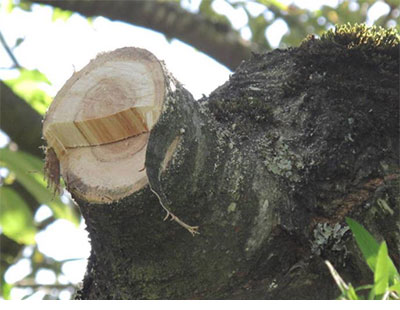
1. Stub Cuts:
Leaving a stub of branch does not allow the tree to seal off disease. If you can hang something off the end of a branch that has been cut back, it is a stub.
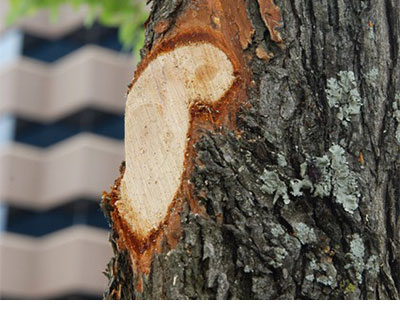
2. Flush Cuts:
This poor pruning technique will cause the removal of the branch collar, thus preventing the tree from sealing over the cut with a callus.
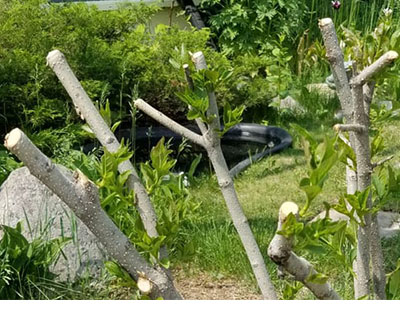
3. Heading Cuts:
This occurs when you remove the end of a branch at a random point, leaving the tree open to pests and diseases and stimulating the tree to put out many weak branches at the end of the cut. Sometimes, the "pruner" may leave an undersized branch at the end of a large, structural branch.
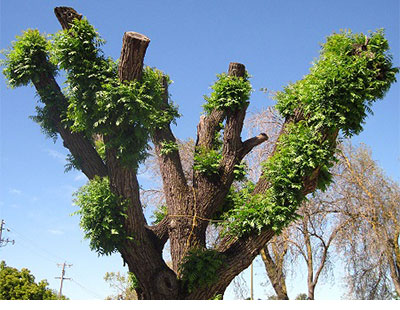
4. Topping a Tree:
Topping involves cutting a tree's main trunk, or branch leader, at a random point below its apex to reduce the overall height of the tree. When a tree is topped it will usually respond by putting out a lot of "watersprouts." These spindly, weakly attached branches sprout in a mass at the end of branches and along their length. This is the tree's natural stress response to the loss of its main structural branch. These cuts make the tree look ugly and deformed, resulting in a lot of corrective tree work in the future. Note: this type of cut is most commonly seen around power lines, so make sure to be aware of your surroundings when you are planting!
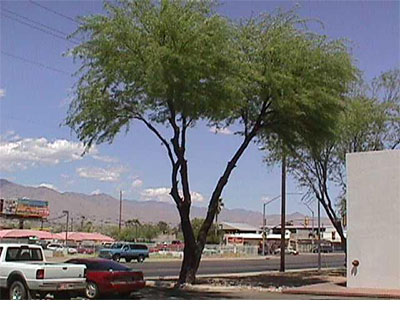
5. Lion Tailing:
Trees having their canopies thinned, with lots of visible interior branches, and foliage growing only at the ends of branches. This creates a future hazard by redistributing the crown weight unevenly on the branches.
Conclusion
Pruning a tree is a long-term practice that does not happen all at once, but instead, in intervals over time. It needs to be attuned to a tree's age, health, and requirements. As a pruner, you should evaluate the entire tree before beginning to prune, and then remove as little as possible to achieve your goals. Always remember, each pruning cut - even perfect ones - are wounds that can stress your tree. Due diligence and care are crucial in order to ensure you will be able to enjoy your trees for years to come.
